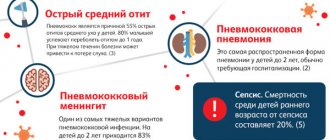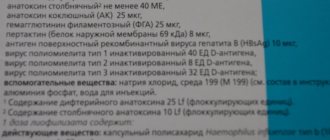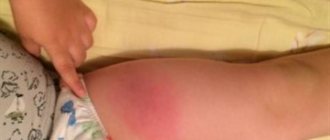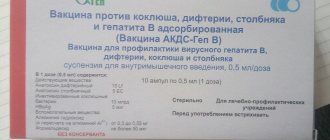Many parents doubt that it is possible to administer Pentaxim to a child with hepatitis B at the same time. They fear that such a combination may cause unwanted reactions. Pediatricians prove that the combined use of vaccines does not pose any risk to the child. On the contrary, there is a positive point in this - the need to visit the clinic once again disappears, which means that the baby will be spared additional stress.
Composition and active substance of Pentaxim and Prevenar vaccines
Immunological preparations contain strains of biologically inactive pathogenic pathogens. Intramuscular administration of a prophylactic suspension allows the formation of a stable protective mechanism against bacterial cultures that are included in the chemical formula of vaccines.
Pentaxim is a combined immunological medicine containing pathogenic agents of 5 dangerous diseases:
- DIPTHERIA.
- Tetanus.
- Whooping cough.
- Poliomyelitis;
- Haemophilus bacillus.
The vaccine promotes the development of long-term immunity to relevant diseases. The drug contains laboratory inactivated toxoids of infectious pathogens.
The antidiphtheria effect of Pentaxim is due to the content of neutralized bacteria of the genus Corynebacterium. Toxins released by microorganisms are the main factor of pathogenicity.
They trigger immune reactions because they are recognized by competent cells as foreign substances (antigens). Protection against whooping cough is provided by the corresponding component of the vaccine.
This infectious disease is especially dangerous for young children - from birth to 6 months. Pentaxim contains a tetanus component, which promotes the development of specific immunity.
This sapronotic infectious disease is transmitted by contact and affects the nervous system. It provokes tonic tension of skeletal muscles and gives rise to generalized convulsions.
Pentaxim and Prevenar are simultaneously used to comprehensively protect the child’s body from a wide range of dangerous infectious pathologies. The vaccines are considered compatible. Pentaxim contains a laboratory inactivated polio pathogen.
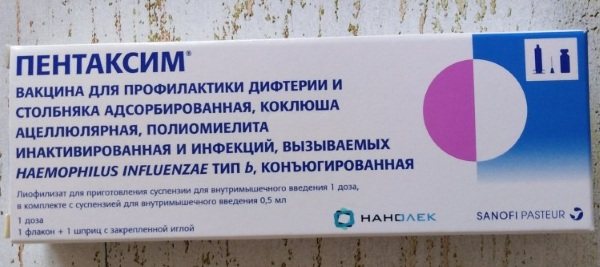
This highly contagious disease, called spinal palsy, is caused by poliovirus, which penetrates the central nervous system and rapidly replicates in motor neurons. The pathology is practically untreatable.
Prevenar is an immunomodulating vaccine containing conjugated pneumococci of 13 serotypes as the main component.
Composition of the drug:
| Immunological component | Volume, mg |
| Pneumococcal polysaccharide serotype 4 | 0,002 |
| High molecular weight carbohydrate 6B | 0,004 |
| Polysaccharide 9V | 0,002 |
| Pneumococcus serotype 14 | 0,002 |
| Oligosaccharide 18C | 0,002 |
| Polysaccharide 19F | 0,002 |
| Pneumococcus serotype 23F | 0,002 |
Vaccination promotes the synthesis of antibodies to these pathogens. The auxiliary components of the vaccine are sodium chloride and aluminum phosphate.
Manufacturer
Until 2021, Pentaxim was produced only by the French pharmaceutical concern Sanofi Pasteur. This is the most famous and largest manufacturer of immunological medicines intended for vaccination.
In 2021, the French company located its factory facilities in the Kirov region. There, 5-valent Pentaxim is produced at the biotechnological site of the pharmacological developer Nanolek.
The technological equipment and the manufactured product fully meet the requirements of the global GMP standard. Prevenar is produced by the American concern Pfizer and its many subsidiaries around the world. The company produces a huge number of medicines.
Many of them are leaders in global sales rankings. Prevenar is a vaccine that was sold for a total of $6.245 billion in 2015. Every year the sales volume of the drug only increases.
What do Pentaxim and Prevenar protect against?
The pathogenic microorganism of the genus Haemophilus influenzae provokes the development of severe inflammatory processes. This culture is included in Pentaxim in small doses and inactivated form.
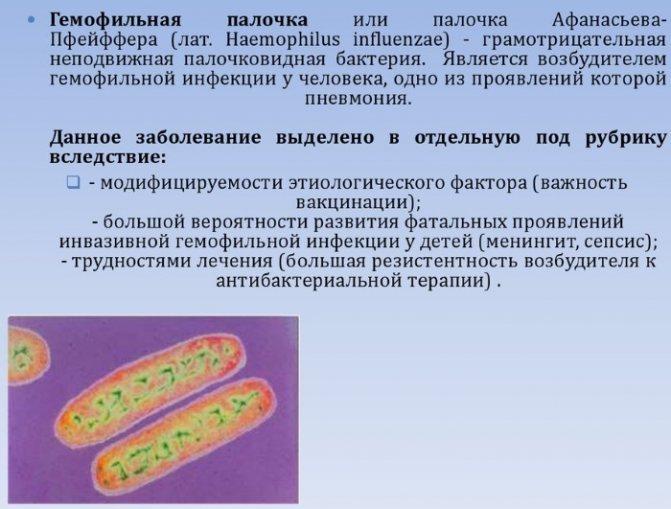
This infection has record resistance to antibiotics used in clinical practice, and is therefore extremely difficult to treat. Vaccination is a quick, cheap and easy way to protect the body from this pathogen.
The disease is especially difficult in early childhood, when the immune system is still unstable and not fully formed. Vaccination against Haemophilus influenzae is standardly included in the vaccination schedule in many developed countries of the world.
Pentaxim protects the children's body from:
- Hib infections type B;
- purulent meningitis;
- pneumonia;
- arthritis.
Children with hereditary immunodeficiency, oncological hyperplasia and hematological disorders are especially in need of such vaccination. They are most vulnerable to this pathogenic bacterial culture. The formation of one’s own immune system and its stabilization ends at 5-6 years.
Pentaxim and Prevenar are administered simultaneously to provide the comprehensive protective support that the child’s body urgently needs. According to WHO, in countries with mass vaccination, the incidence of tetanus is 100 times lower than in those where it is not practiced.
Prevenar is a drug that forms a specific immune response to infection with streptococcal bacteria. This common pathogenic crop lives in large numbers in the environment.
It is also found in the human body, where it is conditionally pathogenic. With healthy immunity, streptococci do not pose a significant threat. However, when the defense mechanism is weakened, the situation changes dramatically.
Viral infections and various diseases create favorable conditions for the rapid proliferation of pathogenic microflora. Streptococcus is a facultative anaerobic bacterium.
Such microbes actively develop when the content of carbon compounds in the environment is high. The environmental situation is becoming an important factor in the pathogenesis of streptococcal pneumonia and other associated diseases.
Vaccination with Prevenar provides the child's body with reliable protection against them. The immunomodulatory drug has a broad effect.
Vaccination significantly reduces the risk of getting sick:
- pneumonia;
- inflammation of the bronchi and upper respiratory canals;
- otitis, tonsillitis, pharyngitis and other bacterial lesions of the ENT organs;
- meningitis;
- endocarditis;
- glomerulonephritis;
- dermatological pathologies provoked by the target pathogen.
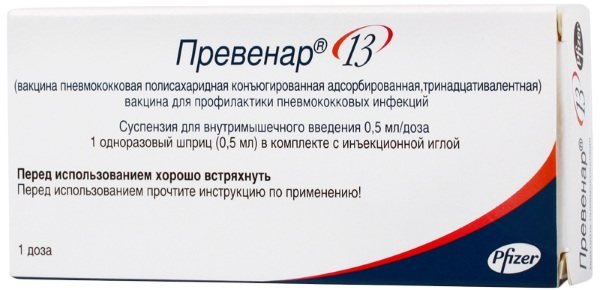
Children have a hard time suffering from such infectious diseases. They are often accompanied by various complications. The vaccination drug Prevenar significantly enhances the immune defense of the child’s body.
Difference between Pentaxim and Prevenar vaccines
In fact, there is nothing in common between the Pentaxim and Prevenar vaccines, except for their action aimed at forming lasting immunity against dangerous infections. Pentaxim is a combination immune drug intended for the prevention of five infections, namely tetanus, whooping cough, diphtheria, polio and Haemophilus influenzae type b.

The solution contains:
- purified diphtheria toxoid;
- tetanus toxoid;
- pertussis component;
- inactivated polio pathogens;
- Haemophilus influenzae type b polysaccharides.
Administration of the suspension in accordance with the schedule recommended by the manufacturer causes the vaccinated person to develop immunity against diphtheria infection, whooping cough, polio, Haemophilus influenzae infection and tetanus. For young children, the vaccine is given in the thigh area, which prevents the solution from penetrating into the vascular bed and the risk of damaging the nerve trunks.
As a rule, to form sufficient immunity, the interval between rounds of vaccination and revaccination should not be less than 4-6 weeks. Prevenar is a multicomponent vaccine designed to produce immunity against 13 serotypes of pneumococcal viruses.
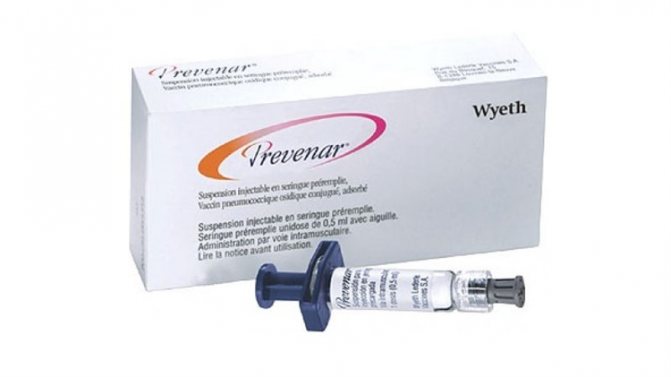
Vaccine Prevenar
This prophylactic solution is not for use in adults. Its main target audience is children under two years of age who do not have immune protection against pneumococcal infection. The vaccine can be purchased in pharmacies with a prescription and delivered in any clinic. The drug is administered intramuscularly into the lateral third of the thigh.
Unfortunately, Prevenar is one of the drugs that have questionable effectiveness. All because of the ban on the suspension in the Netherlands, where three children allegedly died from it after mass vaccination. It has not yet been possible to prove whether Prevenar was really the cause of death of the babies, but the authorities nevertheless decided to play it safe and removed the vaccine from the National Vaccination Calendar.
Benefits of vaccines
Both immunological solutions potentiate the synthesis of antibodies to pathogenic agents introduced into the body. Vaccination is a common and safe method of protection against pathogenic bacteria.
Its clinical effectiveness has been scientifically proven by numerous studies and practice in different countries. Each of the drugs has its own set of undeniable advantages.
Pentaxim is characterized by:
- reliable protection against 5 common and socially significant microbial pathogens;
- minimum required number of injections;
- proven effectiveness and safety of each component of the immunological composition;
- full compliance with the requirements of the World Health Organization;
- well tolerated by infants.
Pentaxim contains laboratory inactivated strains of polio, tetanus and other dangerous diseases, which eliminates the risk of developing vaccine-associated complications. It can be co-administered with Prevenar, which has a similarly high safety profile.
The streptococcal immunomodulator has a more narrowly targeted protective effect, but is no less clinically effective than Pentaxim.
The undoubted advantages of the vaccine include:
- absence of side effects and complications after immunization;
- a small number of contraindications to the appointment of a prophylactic injection;
- possibility of use in newborns;
- simplicity and painlessness of using the suspension;
- affordable cost of the drug.
Clinical studies have confirmed the high specific effectiveness of Prevenar in the prevention of invasive pathologies of pneumococcal origin.
Contraindications and side effects
Vaccines are not used if increased sensitivity to their components is detected.
Pentaxim should not be vaccinated in children who have hypersensitivity to:
- glutaraldehyde – a lipid derivative of glutaric acid;
- streptomycin - an aminoglycoside antibiotic with a wide range of antimicrobial effects;
- neomycin - an antibacterial chemical compound produced by microorganisms of the genus Streptomyces fradiae;
- class B polymyxin is a biochemically aggressive substance that destroys the cytoplasmic membranes of gram-positive pathogens.
Diseases for which Pentaxim vaccination is not carried out include progressive encephalopathy. Children prone to hyperthermia, convulsive conditions of febrile or non-febrile type are not vaccinated with immunological medicine.
Further vaccination is prohibited if the child develops hypotonic-hyperreactive syndrome within 2 days after administration of the solution. This side effect may occur in response to the pertussis component.
The immunological agent is not used for severe allergies to tetanus vaccines. Injection prophylaxis is not performed during periods of bacterial infections and acute respiratory viral infections.
Pentaxim can cause some systemic and local negative effects. Hyperemia and compaction may occur at the sites where the skin is punctured.
Recorded systemic side effects of Pentaxim:
- sleep disturbance;
- decreased appetite;
- dyspepsia;
- nausea and vomiting;
- hives;
- swelling of the extremities in response to the Hib component;
- a sharp increase in body temperature.
Negative phenomena disappear within 48 hours and do not require medical intervention. Rarely, vaccinated children have Guillain-Barré syndrome, an acute inflammatory polyradiculoneuropathy that occurs in response to tetanus toxoid.
Pentaxim and Prevenar are administered simultaneously to form a complete immune circuit of the child’s body. This comprehensive approach has many advantages and does not increase the risk of systemic side effects.
Prevenar has its own set of absolute clinical contraindications and temporary situational restrictions.
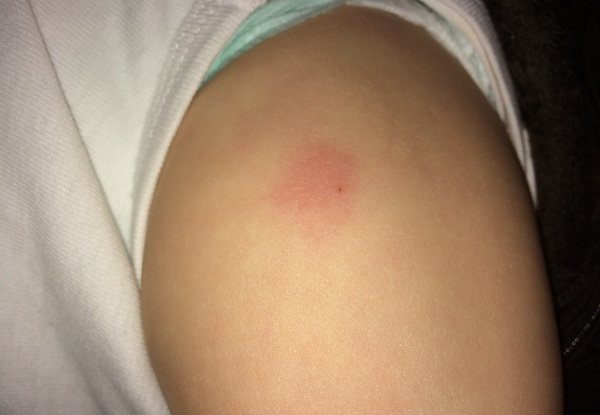
The vaccine is not given if:
- hereditary autoimmune pathologies;
- severe neurological disorders;
- congenital heart disease;
- renal failure.
Vaccination with Prevenar is not carried out in case of elevated body temperature, allergies, or active bacterial infections. Possible side effects include fever, apnea, and episodic hypertension. Prevenar is not prescribed for disorders of the central nervous system and rheological properties of blood.
How to bring down the temperature
If the mark on the thermometer reaches +38…+38.5 °C, the baby should be given an antipyretic. With the development of hyperthermia, his general condition worsens and sleep disturbance is noted. The child becomes whiny and overly excitable. The risk of developing a seizure syndrome increases.
In order to normalize the baby’s condition, the following medications can be used:

Panadol;- Efferalgan;
- Nurofen;
- Paracetamol;
- Calpol;
- Anaferon;
- Ibuprofen.
These medications are available in the form of syrup, suspension and suppository. The effect of the syrup is observed after 20 minutes.
Rectal suppositories have the desired effect after 40 minutes. Despite the fact that their action is slower, doctors often recommend using suppositories. This is due to the fact that they cause less harm to the child’s body.
Rubbing a child with alcohol or vinegar to reduce the temperature is strictly prohibited. When performing such actions, the baby's condition worsens.
Acetylsalicylic acid should not be given to children: Aspirin is contraindicated in childhood.
In case of hyperthermia, you should adhere to the following recommendations to alleviate the child’s condition:

ensure complete peace;- observe the temperature regime (in the room there should be a maximum of +20 ° C);
- before going to bed, use suppositories whose active ingredient is paracetamol;
- maintain a normal level of humidity in the room;
- regularly give the child something to drink, it can be plain water, herbal tea, warm milk or compote;
- be close to the baby, try not to leave him alone for a long time;
- stop using homeopathic medicines; they, as a rule, do not have the desired result and are useless;
- if the injection site is inflamed and very painful, compresses with Novocaine are applied to it;
- do not force the child to eat if he has lost his appetite, do not overeat.
Sometimes doctors recommend giving the child antipyretic drugs during the first two days after administering Pentaxim to prevent hyperthermia. If the thermometer readings exceed +39 °C, you should immediately call an ambulance.
Is it possible to use Pentaxim simultaneously with Prevenar?
Vaccination preparations are compatible both with each other and with any other vaccines, with the exception of tuberculosis. Pediatricians often prescribe injections of Pentaxim and Prevenar on the same day.
This practice is common in the European Union, the United States and Canada. Well-founded concerns about the increased risk of systemic side effects are refuted by some immunologists, citing research results.
The number of negative reactions and complications when using vaccines together is not much different from the rate when used alone. Pathological symptoms quickly and spontaneously disappear within 2 days.
Is it possible to use Pentaxim and Prevenar at the same time?

This practice is very common in Western countries. This is how babies are vaccinated in the United States of America, Germany, and Belgium.
Many parents refuse to give two vaccinations on the same day, justifying their decision by the increased risk of adverse reactions and complications of vaccinations. Immunologists have studied this issue and assure that the frequency of occurrence of pathological symptoms in vaccinated children with the introduction of two vaccines is no different from similar indicators obtained after monoimmunization.
How is the administration of vaccines on the same day tolerated?
Pentaxim and Prevenar are injected simultaneously to produce a lasting immune response. Both drugs have proven themselves well in pediatric practice in Germany, Belgium, and other developed European countries.
Rarely, after injections on the same day, an increase in rectal body temperature is observed, which always exceeds the axillary temperature by 0.6-1.1 ° C. Therefore, this value was assessed in the study.
Most children tolerate co-injection of immunological solutions well. Prevenar is considered a rather painful injection, but it provides reliable and long-term protection for the child’s body from severe diseases of bacterial origin.
At the injection point, compactions may occur and allergic reactions may develop in the form of urticaria or dermatitis. Such undesirable manifestations are eliminated independently and do not require outside participation. Some children experience lethargy and reluctance to eat after the injection.
This is due to the adaptation of the developing organism to the pathogenic microflora introduced, albeit killed in the laboratory. Complications associated with double vaccination are almost never recorded.
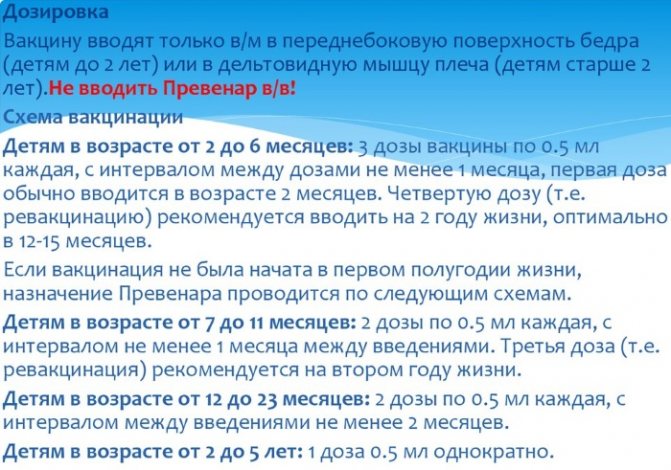
It is extremely rare to experience fast-acting allergic reactions, muscle and bronchospasm, which are characteristic of children of the 1st year of life. Its connection with double vaccination has not been proven. Theoretically, the development of temporary generalized lymphadenopathy is possible.
This pathological condition is manifested by an increase in the size of the lymph nodes, which play an important role in the body’s immune defense. The diagnosis is temporary. The lymph nodes return to normal after the body gets used to the vaccine.
How many days does it last

Sometimes hyperthermia can last for about three days. Rarely symptoms persist for a week. The duration of the post-vaccination period largely depends on the condition of the baby. The development of complications cannot be ruled out.
For example, if hyperthermia is due to infection or allergy, it is observed before drug therapy is started. The symptoms do not disappear on their own.
After how many days is it better to give the next vaccination?
Pediatricians recommend vaccinating a child with both drugs on the same day. This makes it easier to respond to the possible occurrence of unwanted effects and complications. The child will only have to experience the unpleasant moments associated with the injection once.
If the time interval between intramuscular administration of Pentaxim and Prevenar is more than a day, the next vaccination will have to be postponed for a month. This is due to the increased immune activity of the body in response to the deliberate supply of pathogenic microflora.
It is necessary to wait until the irritation subsides and the defense mechanism returns to its natural state. During this period of time, the introduction of an additional portion of foreign biomaterial can lead to unpredictable reactions and conditions.
Complications
Within 30 min. After vaccination, the child must remain under medical supervision. This is necessary due to the risk of immediate anaphylactic reactions and complications.
The latter develop not due to the administration of an immunological drug, but due to the patient’s health condition. Before vaccination, the pediatrician conducts an examination and determines the possibility of vaccination.
It is important to follow the rules of antiseptics, transportation and storage of the medicine. It is necessary to distinguish the body's short-term reaction to foreign biomaterial from pathological complications. They require immediate medical intervention and adequate therapy.
An allergic reaction is considered a side effect, and anaphylactic shock is considered an acute complication. Bronchial spasm, which makes breathing difficult, is a condition that requires immediate medical attention. Vaccination rarely provokes exacerbation of chronic diseases.
Why is there such a reaction?
Hyperthermia is a natural reaction to vaccination, a kind of immune response to the introduced antigenic material. She doesn't cause any concern.
But high temperature can be caused by more serious reasons:
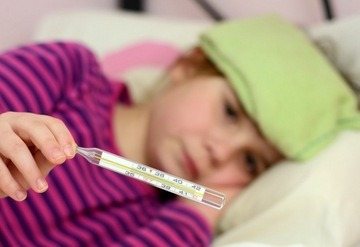
Penetration of infection. For example, the consequences of failure to comply with sanitary standards when administering an injection, the result of using an expired drug. It is also possible to become infected by scratching the injection site. It swells, turns red, and secretes a cloudy yellowish fluid.- Allergic reaction. In addition to changes in thermometer readings, other symptoms are noted. Among them are rash, itching, swelling, diarrhea, shortness of breath;
- Exacerbation of chronic diseases, development of non-infectious pathologies. After the vaccine is administered, the child weakens and becomes susceptible to various diseases.
Rise in temperature: normal or not
Pentaxim is designed to build immunity to certain diseases. After its administration, the child suffers the disease, but in a very mild form .
The immune system begins to work actively, attacking weakened viruses and toxoids. As a result, stable immunity is formed.
Often during this period, health worsens. There is an increase in body temperature. The following symptoms may also occur:

headache:- weakness;
- diarrhea;
- sleep disturbance;
- moodiness;
- loss of appetite.
Such changes are a normal reaction, indicating an active restructuring of the immune system. The symptoms disappear on their own after some time. No medical intervention is required.
If a high temperature is observed for a long period, unpleasant symptoms begin to manifest themselves more strongly, most likely, a side effect of vaccination is noted.
Only a doctor can accurately determine whether this is a complication or a normal course of the period after vaccination.
Vaccination schedule
The universal vaccination plan proposed by WHO provides for 3 preventive injections of Pentaxim for children 1 year of age. Vaccinations are given at 12 weeks, 4.5 and 9 months. The immunological effect is secured by revaccination at 1.5 years. The next vaccination is given at 6-7 years of age.
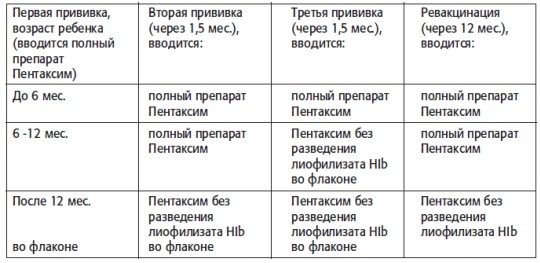
Children have the most difficulty with the first 2 injections. Young age and physiological instability of the body cause side effects. Pediatricians are recommended to have a minimum interval between these vaccinations of 1-1.5 months.
For children under one year of age, the drug is administered intramuscularly into the lateral thigh. At older ages, Pentaxim injection into the deltoid muscle is allowed. The recommended single dosage of the immunomodulating solution is 0.5 ml.
For the next 3 days, medical supervision is required for children under 5 months of age. If pathological manifestations occur, measures should be taken immediately to eliminate them.
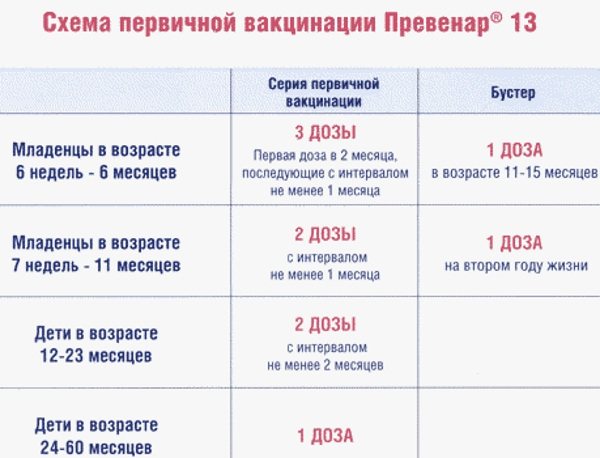
The Prevenar vaccination schedule is somewhat different. It is developed individually depending on the age and medical history of the child. Children 2-24 weeks of age are prescribed 3 single doses at monthly intervals.
If the 1st injection is given at 2 months, revaccination (4th injection of Prevenar) is performed after a year. The most favorable moment for her is considered to be the interval between the 12th and 15th months of life.
If the first injection is made at the age of six months, then the prophylactic solution is given 3 times - the first 2 with an interval of 30 days, and the last one in the 2nd year of life. For children over 2 years of age, Prevenar is prescribed in exceptional cases, in case of excessive susceptibility to bacterial infections. Children over 5 years of age and adults are not vaccinated with the medicine.


